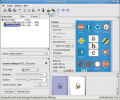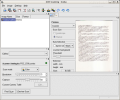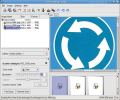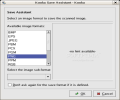The first software application you usually come across when you need to scan documents is Kooka. I will not be able to tell you if this application is better or worse than others, mainly because this is the first scanner software I've ever used in Linux, but I will try to analyze its features and see how it does the job. For this purpose, I burrowed a scanner from a friend of mine and, if chance is on my side, everything should work out of the box and pretty well. As a last introductory word you should know that this is not the first time I use a scanner, but it will be the first time when I'll do it in Linux. I have some technical knowledge about how scanners work but I never had any reason to use one in Linux.
As most of the softwares that work with hardware in Linux, Kooka also relies on some software application to get access to the scanner hardware. This is the SANE library and, generally, it is considered a standard when it comes to scanning in Linux. Building Kooka on SANE is considered good news and more good news are yet to come, because using GOCR or OCRAD Kooka can perform OCR. That acronym stands for optical character recognition and it's used for extracting the text from the pages you want to scan. There is a lot to say about OCR and the scope of this review doesn't include it. As a parenthesis, you should know that for OCR to work well you need a very good quality printed document.
My USB scanner was recognized perfectly by Kooka (actually by SANE) and the nice thing is that you can use other stuff too, like camera connected to a capture card. The start-up preferences suggest that the scanners available on network can be used too. This is a great feature especially for small businesses and, hopefully, detection works well because I can't see where to add a network scanner manually.
Though is not extremely nice or very well optimized, Kooka's interface is easy to use and provides an interesting set of features. Usually, in the bottom left corner of the interface you'll find scanner-dependent settings and the buttons to make preview scan and to do the final scan. Upper you'll see a navigation area. Here you have the Kooka Gallery. All the scanned images are shown, with some additional data like the size and the format. Things can be kept ordered here because you are allowed to create folders in the gallery, to import other images and, if you wish, you can unload them from the gallery.
In the right part there is the preview / scanned image area. It contains two tabs; one is for the scanned image and shows how the image appears after it was scanned, and the other is for previewing the image that should be scanned. An interesting feature is the auto selection, which can be set to be active on black or white, and even the threshold can be adjusted.
The tools available in the top of the screen are very useful, because, if you are not careful to put the thing you want to be scanned in the right position, they can help you fix this very easily by rotating or mirroring your image with just a click of a mouse. However, it's a lot of room left for interfering with a software like GIMP if you wish to correct other defects that are a little bit more complex than that.
Unfortunately, there are no options for automating the process a little and, if you want to scan large volumes of content, the process could turn out to be a little slow.
The Good
The software is good and does the job just fine. Using SANE for hardware detection assures the best support for hardware and the possibility to use OCR extensions comes as a very pleasant surprise.
The Bad
The interface is not very good looking and doesn't provide flexible options. I think that more control should be available and a way to automate the scanning process would really come in handy to some users.
The Truth
This is a pretty straight forward software and I was quite satisfied with it today, considering it's the first one I've used in Linux. The support for OCR extensions is a big plus and, if I would use a scannerfrom time to time I don't think I'd bother to find a better one. If using a scanner would be part of my day to day activities, most certainly I'd search for alternatives.
Check out this screenshots of Kooka:
 14 DAY TRIAL //
14 DAY TRIAL // 







